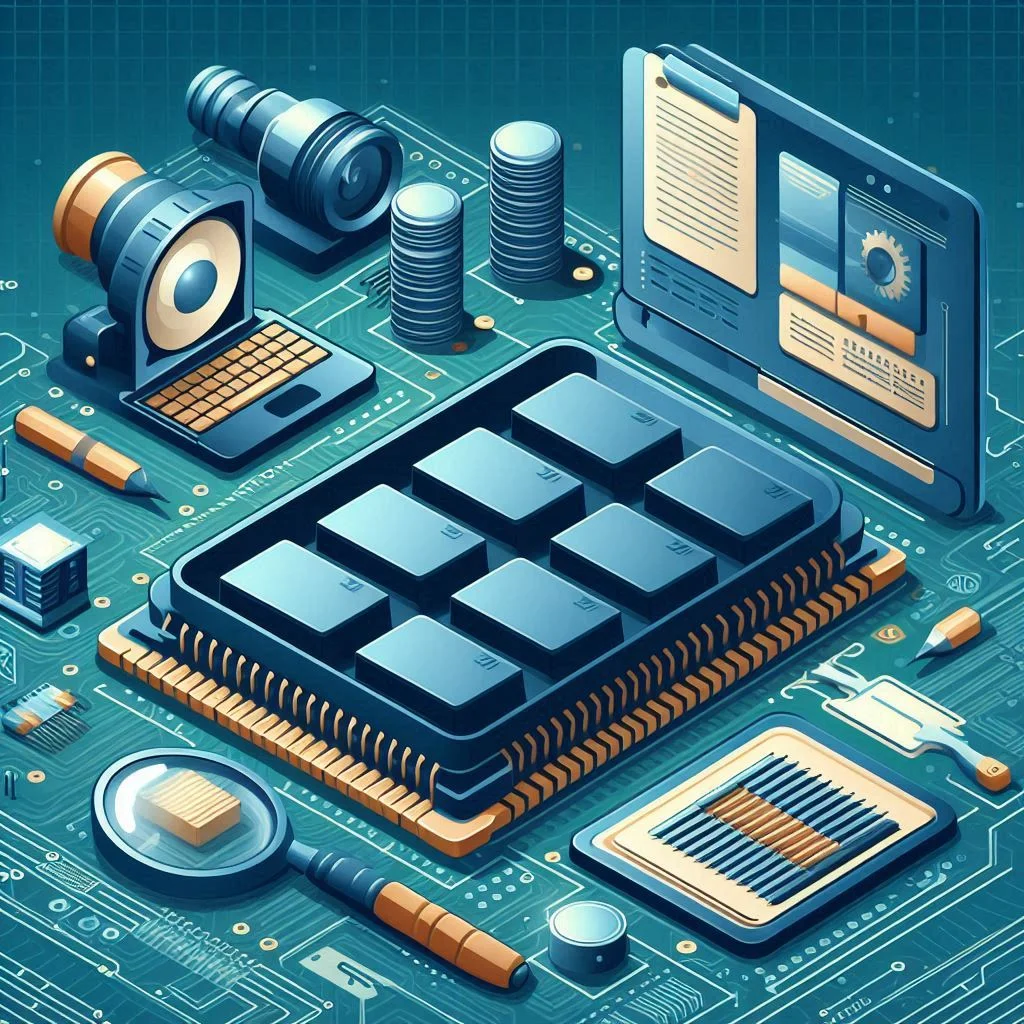Essential Concepts of Virtual Memory Systems for Homework

Virtual memory systems are foundational to modern computing, serving as a pivotal component in managing memory resources efficiently. In the realm of computer science homework, understanding these systems is essential for grasping how operating systems handle memory, optimizing performance, and facilitating seamless multitasking. At its core, virtual memory enables programs to execute as if they have access to a larger, contiguous address space than physically available RAM. This illusion is achieved through a sophisticated interplay between hardware and software, primarily orchestrated by the Memory Management Unit (MMU) in conjunction with the operating system. Mastering these concepts will be crucial for effectively applying them in practical scenarios and academic projects.
The concept revolves around the abstraction of memory addressing, where each process interacts with virtual addresses that are dynamically mapped to physical addresses. This mapping is governed by page tables, data structures that store the correspondence between virtual and physical memory pages. Key components of page tables include entries that indicate whether a page is currently resident in physical memory, its location, and other control bits such as dirty (indicating if the page has been modified) and accessed (indicating recent access).

Address translation plays a crucial role in virtual memory systems, transforming virtual addresses generated by the CPU into physical addresses accessible by hardware. The translation process involves retrieving the corresponding page table entry for a virtual address, extracting the physical page number (PPN), and combining it with the offset within the page to form the complete physical address.
Beyond basic functionality, understanding virtual memory systems equips students with insights into optimizing memory usage, mitigating issues like thrashing (excessive paging), and implementing efficient memory management strategies. These concepts are not only theoretical but also practical, as they underpin the performance of operating systems and applications in real-world scenarios. As students delve deeper into homework related to virtual memory systems, they gain proficiency in addressing complex memory management challenges and designing robust computing solutions that leverage these fundamental concepts
Understanding Virtual Memory Systems
Understanding virtual memory systems is pivotal in modern computing, where memory management plays a crucial role in system performance and application efficiency. Virtual memory allows computers to handle larger programs and datasets than physical memory alone, achieving this by creating an illusion of abundant memory through intelligent use of storage resources. This system utilizes a combination of hardware and software mechanisms, including page tables and address translation, to seamlessly manage memory allocation and ensure smooth operation of multiple processes concurrently. Delving into these concepts illuminates how computers optimize memory usage, enhance speed, and maintain stability across diverse computing environments.
What is Virtual Memory?
Virtual memory is a memory management technique that provides an abstraction layer over physical memory. It allows programs to execute as if they have contiguous working memory, despite physical memory limitations. This abstraction is achieved through a combination of hardware and software mechanisms.
Benefits of Virtual Memory
- Resource Management: Efficiently allocates physical memory among multiple processes.
- Isolation: Protects processes from interfering with each other's memory spaces.
- Ease of Use: Simplifies memory addressing for application developers.
Components of Virtual Memory Systems
The components of virtual memory systems form the backbone of modern computing, seamlessly bridging the gap between physical memory constraints and the demands of complex applications. At its core, virtual memory relies on several key elements: virtual addresses, which provide processes with an expansive address space; physical addresses, where data resides in tangible memory modules; and page tables, crucial maps that translate virtual addresses to their physical counterparts. These systems also incorporate page size configurations, influencing memory access efficiency, and mechanisms like the Translation Lookaside Buffer (TLB) to expedite address translations. Understanding these components is fundamental to optimizing memory usage and enhancing system performance.
1. Virtual Addresses vs. Physical Addresses
- Virtual Addresses: Generated by the CPU for processes to use; typically larger than physical addresses.
- Physical Addresses: Actual addresses in physical memory where data resides.
2. Page Tables
- Purpose: Maps virtual addresses to physical addresses.
- Structure: Contains entries (page table entries, PTEs) for each page, indicating its physical location and status (e.g., resident, dirty).
- Attributes: Includes flags like Dirty (D) and Resident (R) bits to manage page state.
3. Page Size
- Definition: Determines the granularity of memory allocation and management.
- Impact: Affects memory access speed, efficiency of page table operations, and overall system performance.
Address Translation Process
The Address Translation Process is a fundamental mechanism in modern computer systems that bridges the gap between virtual and physical memory. It enables efficient memory management by converting virtual addresses generated by the CPU into corresponding physical addresses in RAM. This process involves several key steps: decomposing the virtual address to extract the Virtual Page Number (VPN) and offset, looking up the Page Table to find the Physical Page Number (PPN), and finally combining the PPN with the offset to form the actual physical address. Address translation plays a crucial role in optimizing memory usage, ensuring data integrity, and enhancing overall system performance.
Virtual to Physical Address Translation
Process: When a CPU accesses a virtual address, the MMU (Memory Management Unit) translates it to a physical address.
Steps Involved:
- Virtual Address Decomposition: Separate VPN (Virtual Page Number) and offset.
- Page Table Lookup: Use VPN to find corresponding PTE in the page table.
- Translation: Combine PPN (Physical Page Number) from PTE with offset to form physical address.
Handling TLB and Page Faults
- TLB (Translation Lookaside Buffer): Caches recent translations to speed up address translation.
- Page Faults: Occur when required page is not in physical memory (handled by OS, involves disk access).
Advanced Concepts and Practical Tips
Advanced Concepts and Practical Tips in virtual memory systems delve into optimizing memory management beyond basics. These concepts include fine-tuning Translation Lookaside Buffer (TLB) efficiency and implementing sophisticated page replacement algorithms like Least Recently Used (LRU) or Clock. Practical tips involve visualizing page table structures through diagrams for clearer understanding and leveraging online simulations to simulate real-world scenarios. Understanding these advanced concepts is crucial for computer science students aiming to enhance system performance and efficiency in memory-intensive applications. This guide explores these concepts comprehensively, equipping readers with practical knowledge to excel in addressing complex memory management challenges.
Advanced Topics
- TLB Optimization: Strategies for improving TLB hit rates and reducing translation overhead.
- Page Replacement Algorithms: Overview of algorithms (e.g., LRU, FIFO) used to replace pages in memory when needed.
Practical Tips for Students
- Diagrammatic Representation: Use diagrams to visualize page tables and address translation processes.
- Practice Problems: Resources for practicing virtual memory system concepts with additional problems.
- Online Tools: Recommend tools and simulations for hands-on learning and experimentation.
Conclusion
In conclusion, delving into the intricacies of virtual memory systems reveals their critical role in modern computing environments. Throughout this exploration, we've uncovered how these systems manage memory efficiently, allowing for larger and more complex applications to run seamlessly. By understanding the fundamental components such as virtual addresses, physical addresses, and page tables, students gain a deeper appreciation for how memory is allocated and accessed within a computer.
Moreover, advanced topics like TLB optimization and page replacement algorithms highlight the ongoing evolution of memory management strategies. Optimizing TLB performance through cache management techniques can significantly reduce memory access latency, enhancing overall system responsiveness. Similarly, implementing algorithms such as LRU ensures that frequently used pages remain in fast-access memory, further optimizing resource utilization.
Practical tips provided in this guide, including the use of visual diagrams and interactive simulations, offer valuable tools for reinforcing conceptual understanding. Visualizing page table structures and simulating memory management scenarios not only solidifies theoretical knowledge but also prepares students for real-world applications where efficient memory utilization is crucial.
By mastering these concepts and techniques, computer science students are better equipped to address the complexities of memory-intensive applications and system performance challenges. Whether designing software solutions or optimizing existing systems, a strong foundation in virtual memory systems is essential for building robust and efficient computing environments.
In essence, this guide has aimed to demystify virtual memory systems, offering a comprehensive overview from basic principles to advanced strategies. Armed with this knowledge, students are empowered to navigate and innovate within the dynamic landscape of computer science and technology.